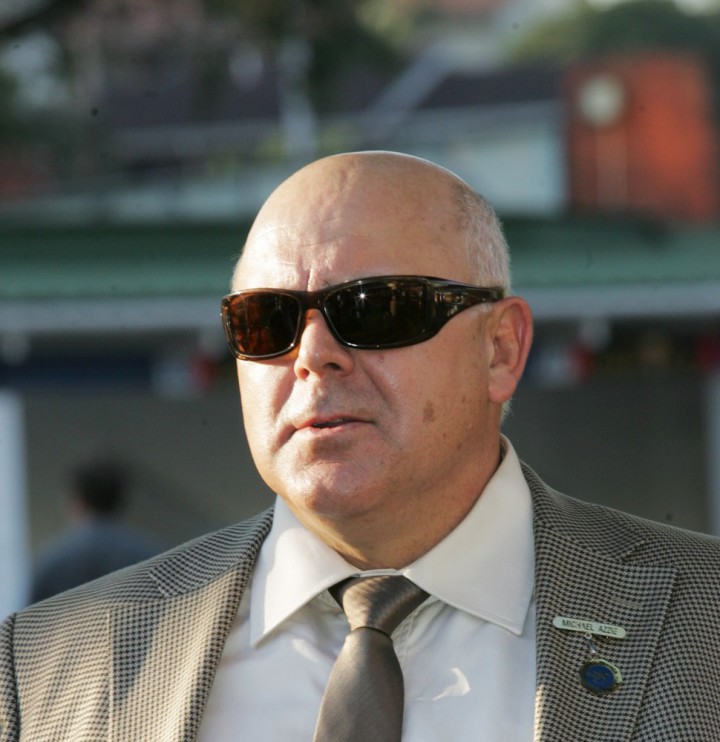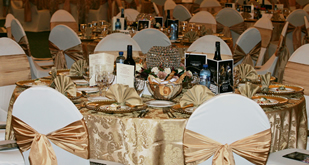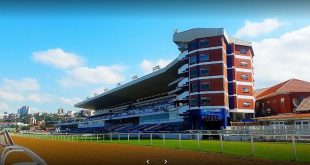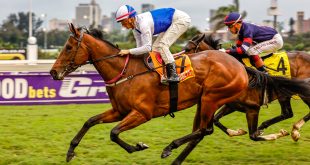The Gr 2 R1 million Supreme Cup sponsored by SAP, formerly known as the Emerald Cup, had its last running on the Vaal Sand track on Saturday and among those who are sad about this surface’s pending discontinuation is Mike Azzie, trainer of Saturday’s big race winner Deputy Jud.
Azzie was thrilled for Deputy Jud’s owners Adriaan and Rika van Vuuren, who have had close to 100 winners in three years in the game, but this was their first big one.
“It was their biggest pay day and long deserved. I think there are good times ahead for them because with patience there are now some good horses coming through the ranks.”
Deputy Jud has come through the race well. “He is a tough horse”, said Azzie of the four-year-old Judpot gelding.
The Van Vuurens, who are one of the biggest spending couples at the South African thoroughbred sales, were not on course due to a family wedding. However, they are keen racegoers and are unlikely to miss Deputy Jud’s other big engagements this season, which according to Azzie could either be the Gr 1 SANSUI Summer Cup at the end of November or races like the Gr 1 L’Ormarin’s Queen’s Plate and Gr 1 J&B Met.
Azzie was also full of praise for Deputy Jud’s jockey JP van der Merwe, who rode a treble for the yard at the meeting. He said, “Horses love JP, he is kind to them and they run for him. He is talented and I have always said when he gets serious one day he will really go places.”
Azzie did not put down Deputy Jud’s win to a freakish liking for the sand surface, but rather to an improvement in him brought about by recent gelding.
He said, “He doesn’t have to prove himself on turf, he finished third in the SA Classic and second in the SA Derby and might even have won the Daily News 2000 if he hadn’t taken that bad bump. After he had taken that bump, he became very obstinate and gave us a torrid time. He did not want to go to work in the mornings, the groom had to lead him all the way to the ring, and before his workout he would stand for minutes not wanting to do it until he felt like it.”
Upon returning to Johannesburg Azzie told Van Vuuren he would not be able to continue training the horse unless he was gelded. In emphasising the necessity he pointed to a former inmate of his Potala Palace, a Gr 1 winner with an outstanding pedigree, who was attracting little interest at stud. Indeed if Deputy Jud had been packed off to stud he would likely only have been covering Van Vuuren’s own mares, such is the quality of stallion in the country at present.
Azzie is one of many who is sad about the pending discontinuation of the Vaal Sand surface. He said, “When the plan to build the Vaal Sand track was embarked upon, many of us put pressure on them not to do it, but they proved us completely wrong. The sand surface offered a lifeline for so many horses that were going nowhere on the turf, so it is going to be missed for this reason by owners, trainers and breeders. It is a sad day for many.”
One of the best examples of a horse who was given a new lease of life by the surface was provided by the St. John Gray-trained Alami gelding Alimony. After over 40 runs on the turf, Alimony had a merit rating of only 69, despite having won 6 races. However, he proved a revelation on the sand and after a quick hattrick of 1600m wins, two of them by close to ten lengths, he suddenly found himself 18/10 favourite for the 2008 Emerald Cup, despite already being a six-year-old. He duly won the race, carrying 52kg off a merit rating of 94, and in the following two years finished third and second respectively.
However, Alimony wasn’t bad on the turf and didn’t fall into the category of horse whose career could be rescued by the Vaal sand. The latter were sorts who were able to maintain a reasonable gallop from the beginning of a race right until the end, but did not have the necessary turn of foot to win races on the turf (Like dirt surfaces in the USA, the lack of traction on the sand surface makes immediate acceleration more difficult). When the Vaal sand track closes it will be difficult to find victories for this one-paced type of horse, some of whom had choppy actions as opposed to the long strides that are invariably vital on turf surfaces.
However, jockeys might not be among those sad to see the end of the Vaal Sand.
Piere Strydom was its biggest critic. He said it was important on this track to be within striking distance in the straight, because he likened the attempt to reel in a horse in front to trying to trying to catch up with somebody in the soft sand of the beach. The kick back apparently made this task even more difficult. A good start was therefore vital, but he lamented that horses often slipped when attempting to ping the gates. Jockeys were thus left in a catch 22 situation.
Punters were generally not fans of the surface either, due to the perception that there was a relatively higher incidence of upset results. However, the shrewd were often able to find value on this surface. One example was of horses making their debuts on the Vaal Sand who might have racing styles as well as pedigrees which could be suited to the surface and therefore form improvement could be expected.
– David Thiselton







